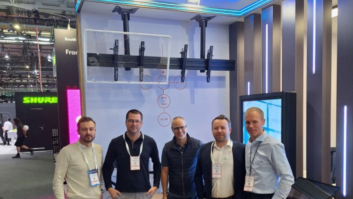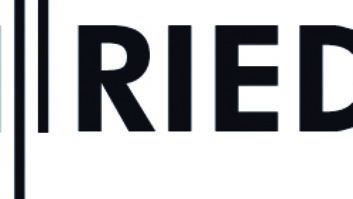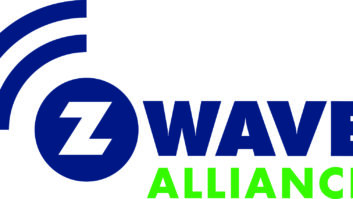Someone once told me that the secret of success is just to turn up. A manager I worked for (a wise man who, among many other things, taught me that it is often easier to beg forgiveness than to ask permission) told me that it was all about doing the right things, and doing them right.
However, having spent what seems like an eternity providing technical support for five networked PCs at home and installing more audiovisual gear than you can shake a stick at, I can now say that I truly know the secret of success. It’s having the right cables.
“Only connect”, EM Forster, the English novelist, encouraged us in Howards End. He must have foreseen what it would be like to be an audiovisual systems integrator/installer.
There is, perhaps, no more challenging aspect of installing AV systems than making the connection between the end points – the laptop and the projector, the media server and the digital sign, the videoconferencing suite in London with the videoconferencing suite in New York.
Three issues are increasingly engaging the imagination and expertise of integrators. The first is that high definition is becoming the de facto standard for both video and audio – meaning that significantly larger amounts of data have to be moved around.
The second is that not only are the individual video and audio streams becoming larger – there are more of them.
The third is that, as AV becomes more pervasive, we’re having to move that data across greater distances. And while new standards and protocols are emerging to allow all this to happen, there is not only a large number of them, but they must also co-exist, in many cases, with legacy protocols and standards.
Starting point
But to begin at the beginning – with the cable. In the consumer world, a single euro will get you a ‘good enough’ SCART cable, and ?5 will get you a ‘good enough’ 10m Cat5 Ethernet patch cable. But what’s ‘good enough’ for connecting a budget DVD player with a 720p screen, or a home PC network, is unlikely to be good enough for demanding commercial applications.
“For short distances, cable quality isn’t such a big issue,” says Steven Mattingly, managing director of TV One, which manufactures a broad range of connectivity and conversion products. “But the longer the cable, the bigger the part cable quality plays in the final quality of the displayed image. And for commercial installations, certified cable that meets building and fire regulations is vital.”
“With cheap Ethernet cables, you’ll find that they are more likely to be made with 26-28AWG UTP, which has much less copper than the industry standard of 24AWG,” adds Michele Howells, managing director at connector and cable specialist Quadtronics. “In addition, the RJ-45 connector will probably have only 10 micron gold contacts as opposed to the 50 microns that’s appropriate for demanding commercial applications.”
“More expensive cable will give you oxygen-free cores and connections, providing better integrity of the signal path,” notes Steven Vacher, technical manager and consultant liaison at Crestron UK.
But it’s not just about signal integrity – there’s also the issue of reliability to take into account, according to Charlie Cook, sales manager at connector manufacturer Neutrik.
“Cheap RJ-45 connectors should be used only if they aren’t going to be unplugged,” he points out. “Neutrik has taken the RJ-45 connector and ‘ruggedised’ it, creating EtherCon which is used by touring audio and lighting companies worldwide. The fundamental problem with the RJ-45 connector is that it’s fragile – it will break if stood on, and the latch will snap off. EtherCon addresses both those issues.”
Dug Guthrie is technical director at cabling specialist VDC Trading. “For the uninitiated, it can seem that a Cat5 cable is a Cat5 cable is a Cat5 cable,” he says.
“But does the application require screened or unscreened cable? Is the cable stranded or not stranded? What about skew? An important part of the value that we provide is in being able to ask the right questions, share our experience and expertise, and perhaps offer alternative solutions to ensure that the customer gets the best solution possible. Our aim is to be a one-stop shop such that an installer or integrator can fulfil all his cabling needs from a single, knowledgeable source.”
According to many in the industry, an important change is taking place as bandwidth becomes more of an issue. The change is from copper to fibre.
“There’s no doubt that fibre is becoming increasingly important – and it’s also becoming much more affordable,” Guthrie says.
“Each time I go out to a trade show in Asia, I’m struck by how rapidly prices for fibre converters are falling. Basic fibre cabling – the kind you might run inside a wall – is becoming incredibly inexpensive. Of course, it becomes more expensive in its more rugged forms – the kind you might use for touring, for example.”
“For long-distance transmission of high bandwidth material – such as HDMI and DVI – fibre optic cabling looks like the way forward,” agrees Nick Mawer, marketing manager at Kramer Electronics.
“Copper is the limiting factor on bandwidth,” says Cook, “which is why we’ve devised OpticalCon, which we believe is a very cost-effective rugged optical connector. It’s been well received both by TV and audio companies that need to increase bandwidth. Optical is the only way forward, and all the pieces are dropping into place.”
Future formats
Any discussion of future connectivity trends must, surely, include wireless? Apparently not – or not yet, anyway. The consensus is that the limited bandwidth it can offer is in stark contrast to the industry’s growing need for bandwidth; that it is insufficiently reliable in an environment where growing numbers of audiovisual applications are mission critical; and that its relative lack of security makes it suitable for only limited applications.
If the industry is mostly in agreement on the subject of fibre optic and wireless, there is less agreement about whether HDMI will be significant for commercial applications – despite the fact that it has emerged as the standard for consumer AV interconnect, and that the industry is overcoming HDMI cable length restrictions with a range of imaginative solutions.
“With HDMI, transmission length isn’t really the issue it’s often made out to be,” says Guthrie. “At least, it’s not an issue if you know what you’re doing.”
Mawer is far from convinced. “Its only place in professional AV applications,” he says, “is as a source signal. But it’s not yet a robust enough standard in the commercial world. For example, supposing you have a display that supports deep colour and a source that supports lossless audio formats: both can offer HDMI 1.3 compliance, but your system will not end up supporting either. And then there’s the awful HDMI connector.”
Bob Rapoport, sales and marketing director at Purelink, whose products are exclusively available in the UK through Asheridge Communications, couldn’t disagree more. “HDMI v1.3 is the highest level of resolution and dynamic range ever offered for video and audio playback,” he says.
“It is, in essence, a one-to-one copy of the master tapes with no compression, in pure digital form, not analogue. We are seeing more and more HDMI v1.3 applications in the professional channel because the only way to access protected 1080p HD content from the studios is HDMI. People moan about copy protection, and want a non-protected source. That’s just not going to happen.
“As the Borg used to say on Star Trek, ‘resistance is futile’.” Anyone who doubts the power of Hollywood, the vigour with which it will defend its copyright, and its ability to dictate standards in the AV industry need look little further than Blu-ray’s victory over the rival HD-DVD format.
“The industry is in denial about the need to upgrade to fibre for transmission of 1080p content via HDMI,” he continues. “Because of the early ‘glitchiness’ of HDMI, most installers and dealers avoided HDMI and remained on an analogue component connection at 720p/1080i. However, with Blu-ray and now satellite sources delivering 1080p content with 225% more data, copper is no longer capable of delivering the next generation of HD content beyond 15ft.”
Co-existence calls
The fact is, though, that analogue and digital, copper and fibre, VGA and HDMI, UTP and coax, and the plethora of other standards and formats need to co-exist, at least for the foreseeable future. The situation does, however, create an opportunity for companies such as Crestron, Kramer and TV One.
“There’s no doubt that HDMI is rapidly becoming the industry standard for true HD content,” says Vacher, “but HDMI creates many challenges for professional AV systems integrators. Crestron’s DigitalMedia product family integrates analogue audio/video, digital audio/video formats including HDMI, and control into a complete systems solution.”
“At TV One, we develop products that are the glue that joins new and legacy equipment: we address the multitude of standards and formats with multiple input video scaler switchers,” says Mattingly. “These enable a mixture of video formats and standards to be input and switched to single or multiple outputs in the desired format. As an example, our latest C2-2355A’s inputs and outputs can be DVI, RGB, YUV, YPbPr, Composite or S-Video (YC) and SD/HD-SDI.”
What of the future? Mawer believes that DisplayPort – a standard proposed by VESA, and designed primarily for interfacing computers with displays or audiovisual systems – has the potential to rival HDMI. Mattingly sounds a note of caution, however.
“DisplayPort is on the horizon and holds a lot of promise in providing even better quality colour depth and higher refresh rates,” he says. “It remains to be seen, though, whether it will be adopted by enough users in the future to become a mainstream connector.”
For Guthrie at VDC Trading, the future is Ethernet. “Ethernet is going to be massively important for us in the future. It’s obviously central to IT, but now it’s becoming increasingly important for AV and broadcast,” he says. “We’ll be substantially broadening our Ethernet offering in our forthcoming catalogue. Ten Gigabit Ethernet is really starting to take off, and we see a real future for 10GB fibre.”
If he’s right – and it seems unlikely that he’s wrong – then more sophisticated connection management becomes a requirement. James Winfield is channel sales manager at SMC Networks, a company specialising in hubs, switches and network interface cards. “Features to distinguish between packet types like VOIP/data are becoming more common to standard switches – a feature called Quality of Service, or ‘QoS’,” he says.
“Switch capacities are being enhanced with more allotted memory for performing complex switching and stacking functions.”
That, of course, raises the perennially thorny issue of the growing convergence and integration of IT with AV. “The AV world is very much more bandwidth-hungry than the IT world,” says Mawer. “It’s no surprise that most IT managers don’t want AV anywhere near their network. However, Ethernet control of devices is becoming increasingly popular – and those protocols came from the IT world. Streaming is becoming more important as a part of large AV systems.”
“There are major differences between the two worlds,” notes Vacher, “but with more and more Crestron products enabled with Ethernet ports, convergence is inevitable.”
“There’s little doubt,” says Howells, “that IT installations and AV installations are becoming more connected when cables are installed. IT cabling is typically run with UTP, while AV is run on coax. It’s becoming increasingly the case that the cables are run in together. If an AV installation is added to an existing building and runs of new cable are difficult, then the balun is a great fix in being able to utilise the UTP cabling for AV applications. The problem, of course, is that IT applications can’t be run on AV cabling.”
She is not alone in believing that, when it comes to cabling and connectivity, the AV installation/integration community can use all the training and education it can get. While the development of end point equipment – projectors, displays, microphones, speakers, source platforms and so on – has been largely linear and incremental, making those products and technologies relatively easy to stay abreast of, developments in cabling and connectivity have occurred much more rapidly and across a broader spectrum.
The cabling and connectivity industry is responding to the growing need for greater bandwidth, greater distance and greater reliability with new, imaginative and innovative products that respond to this need. The art for the installer/integrator is to know what those are, what problems they solve and what opportunities they create.
After all, there is probably nowhere that an installer/integrator adds more value than in the ability to make all the elements of the proposed solution talk to each other. It’s about more than just having the right cables.







